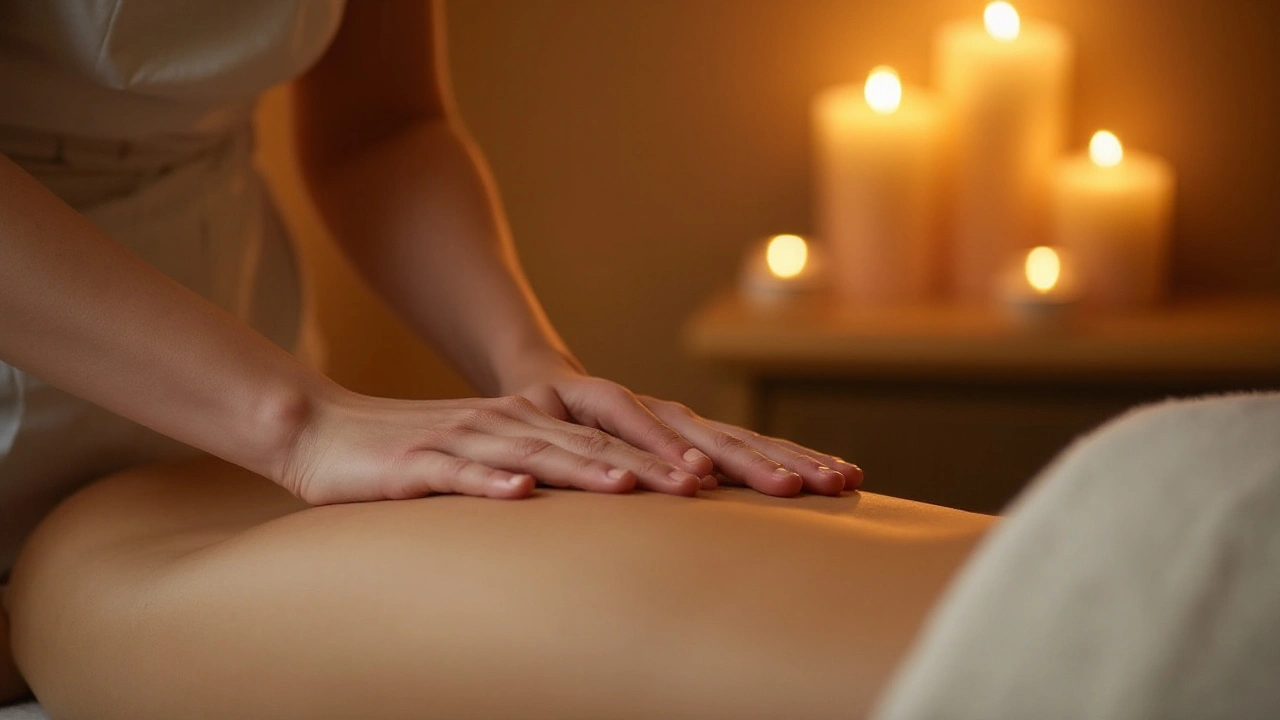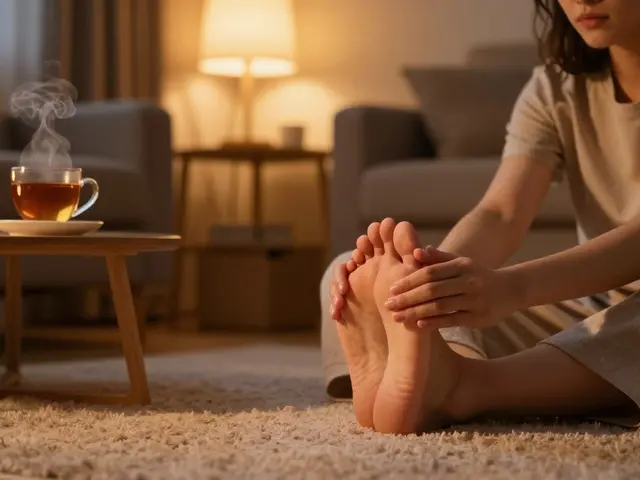Muscle Relaxation: Practical Techniques to Ease Tightness Now
Got knots, tight shoulders, or hips that lock up? Muscle relaxation doesn’t need fancy gear or hours at a spa. Right away you can use breathing, simple self-massage, and a few targeted moves to drop tension and move better. These steps are easy to follow and work with most massage styles—think trigger point work, acupressure, or warm stone sessions.
Quick 10‑Minute Routine to Relax Muscles
Start with 2 minutes of slow belly breathing: inhale for 4, hold 1, exhale for 5. That calms the nervous system and lets muscles let go. Next, spend 3 minutes scanning by touch—press gently along neck, shoulders, and low back to find tight spots. Spend 1–2 minutes on each tight area with steady pressure. For muscle knots (trigger points), press firmly but not painful for 30–60 seconds, then release. Follow with a 2‑minute gentle stretch: chin to chest, shoulder rolls, and a forward fold to ease the spine.
If hands-on work feels better, try a warm stone or hot pack for 5–10 minutes before pressing. Heat loosens tissues so your fingers reach deeper without force. Cold works better for fresh swelling or sharp pain—apply a cold pack for 10 minutes, then use gentle movement.
Targeted Tips and When to Choose a Therapist
Want specific fixes? For headaches, press the base of the skull and the space between the thumb and index finger (acupressure). For tight hips, do a self-massage along the glute and piriformis with a ball against a wall. If posture feels off, slow movement practices like Feldenkrais or Hellerwork style sessions help you retrain how you hold your body instead of just treating pain.
Not all tightness needs surgery, but if a joint is locked, numb, or steadily worse, see a clinician—procedures like contractual tendon release exist for severe stiffness. For chronic pain, gentle approaches like Ortho‑Bionomy, Rolfing, or regular therapeutic massage can change how your body moves over time. And palliative or blind massage options offer skilled, compassionate care when comfort matters most.
Safety first: don’t push through sharp or new nerve pain. If you’re pregnant, have blood clotting issues, open wounds, or recent surgery, check with a health pro before trying deep pressure or heat. Always hydrate after a massage and give sore areas a day of light movement, not total rest.
Want to find the right session? Search for therapists who mention trigger point, acupressure, or the specific style you want—Amma, Hilot, Lomi Lomi, or warm stone—so you get a match. Small, regular steps beat a single long fix. Try the 10‑minute routine daily and you’ll notice tighter spots ease and movement feel smoother in weeks, not months.

Unlocking the Benefits of Neuromuscular Massage Therapy
Neuromuscular massage therapy is an innovative approach that focuses on treating muscle pain and improving mobility. This therapeutic practice targets specific muscles, easing tension and promoting relaxation. Regular sessions can play a significant role in managing chronic conditions, enhancing overall well-being. Discover the techniques and benefits of neuromuscular massage, and learn tips for finding a qualified therapist near you.
Categories
- Health and Wellness (148)
- Alternative Therapies (86)
- Massage Therapy (40)
- Travel and Culture (15)
- Beauty and Skincare (9)
- Holistic Health (8)
- Health and Fitness (5)
- Spirituality (5)
- Other (2)
- Personal Development (2)
Popular Articles



